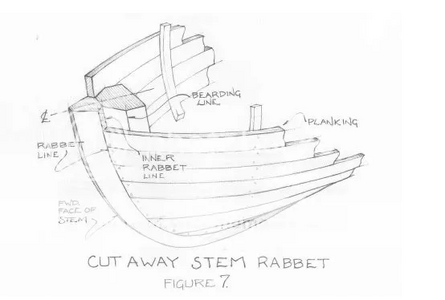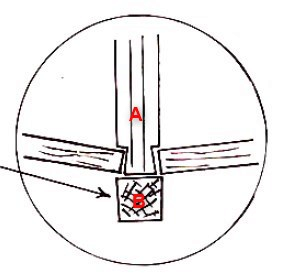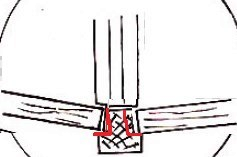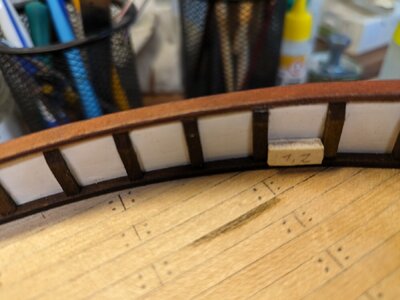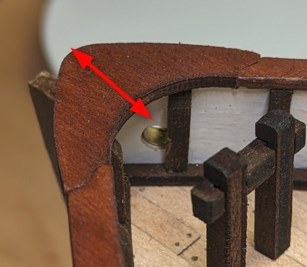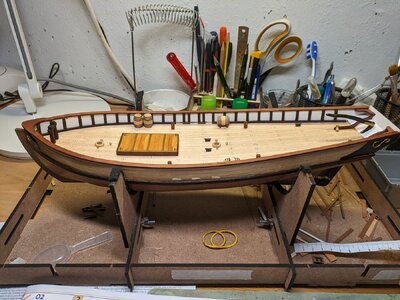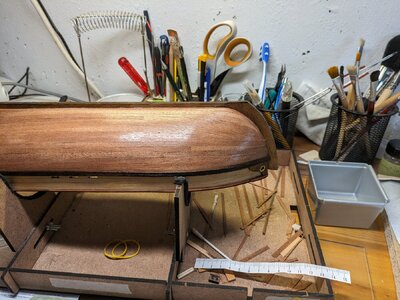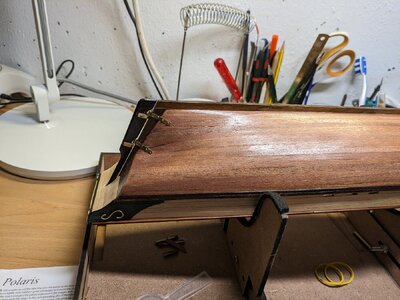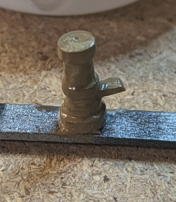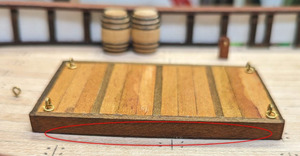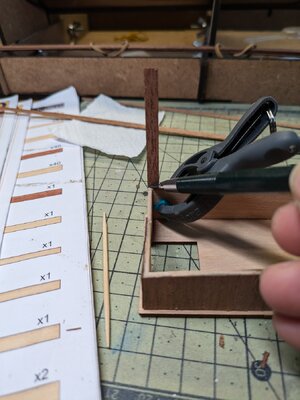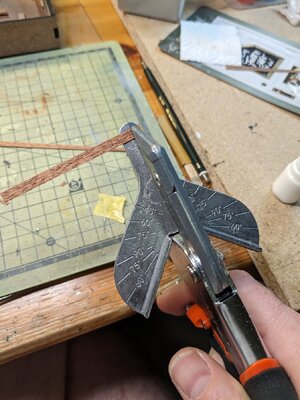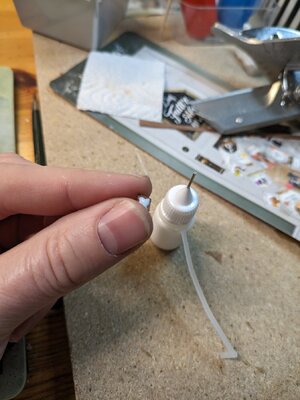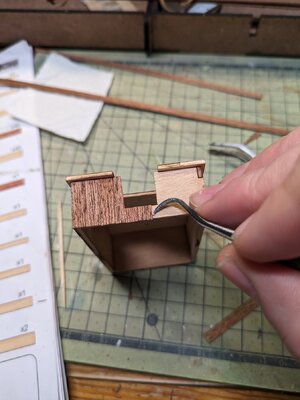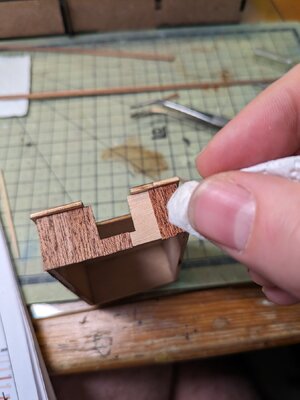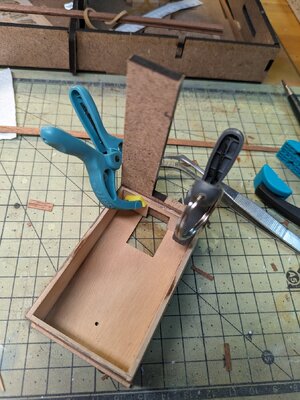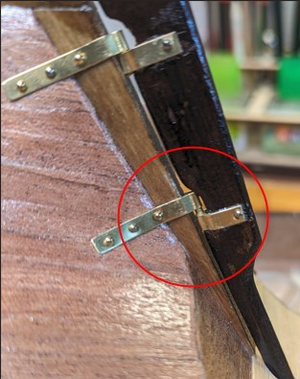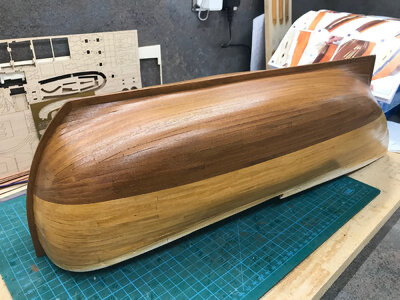My nearly first attempt for a wood kit is the Occre Polaris. I already started with Amati greek bireme before, but stopped it because I realized that I'm not ready for it. Maybee I will continue later with it.
I ordered the Polaris starterset (https://occre.com/en/collections/modelismo-naval/products/polaris-starter-pack) together with the coloring set (https://occre.com/en/products/pack-...[URL]https://occre.com/en/products/pin-pusher and the precision set https://occre.com/en/products/precision-set.
Additionally I bought the work stand https://occre.com/en/collections/accesorios/products/soporte-trabajo
.
I think the tools are ok for the price (they cost 10€ if you order the starting pack).
The pin pusher is really fine for me, in comparison I already had (Amati) this one is much easier to handle for me.
But the idea was the precision set. This photo etched parts are realy fine.
The parts in the package and the manual are really good quality. For me the size of the manual is not ideal, the complete manual is in A3 format (don't know the american equivalent but about double letter format). For the sketches this format makes of course sense but I would have prefered the rest of the manual in a smaller format. I'm accustomed to a smaller format by plastic modelling and don't have that much place better said I have to tidy up
The German translation of the manual is partly not understandable, so I work with the English one.
I'm already halfway through the build. For the first steps I will make a short summary.
Step A:
Didn't had a problem with that, created some straight woodblocks from waste wood to get the parts in a 90° angle and used a lot of clamps. I uses white glue like suggested in the manal.
Step B:
Also no problems there, I worked exactly like shown in the manual
Step C:
Used my Amati plank bender for the railing. Sanding away that much material (parts C1-C4) was new for me, coming from plastic modelling. But this is the fine about wood working...you can really "work" more with the materials.
Step D-F:
planking of course something completely new. I did it like the manual shows it, no tapering of the planks. Also used the plank bender here. I destroyed some planks with bending them to much (even after soaking them in water over night)...some more practice needed here.
I worked partly with nails, partly with clamps. Within this long running blanking job I was sometimes not sure what will be the outcome of this. In the photos of the manual, the youtube videos and photos in SOS forum the hull was never looking so coarse. But after sanding it down (a lot, really a lot of sanding) it, I'm ok with it. For the first try its ok. What to learn for the next modell: Both sides should be more identical. In the end I needed about half a blank more on one side. I don't know were it came from but I managed to get a really big gap between the first blank and the railing on one side. But as there is a second blanking...no big problem.
Most of the nails I inserted before I removed, some were sanded down.
I'm a little frustrated now that I haven't started a build log sooner to have a before / after sanding comparison.
Step G-H:
I'm quite sure if it would have been better to attach the keel before starting with the second planking. My problems with this you will see later.
The second planking I did with contact clue like suggested and again without tapering. As I'm not having much time at once I masked the hull for each plank, added the contact glue and removed the tape. Sounds a lot of work, but is was working fine. In this step I had to remove some planks again (very hard with contact glue!, the planks are not useable any more) and did some more sanding of the first planking.
Step I:
Here I needed some pause for reflection with this I3 strips...the manual says the this strip (sorry, don't know how it is called) should be 20mm from the edge of the hull. That might be so at bow and stern But in the middle I think it has to be less, otherwise the strip would be much further under the three openings.

Step J:
At this step glued the keel and it looks...
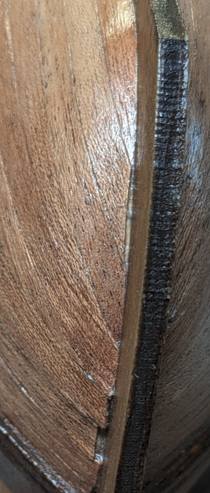
...like that. I guess I can only create really small pieces and hope to be able to glue them without many glue spots. Any other suggestions for now and how to handle that for future builds? In In the instruction of the next ship (already ordered the Occre Buccaneer at black friday) it is the same sequence. Keel is glued after the second blanking.
...to be continued soon (a few steps as summary, but then a build log)
I ordered the Polaris starterset (https://occre.com/en/collections/modelismo-naval/products/polaris-starter-pack) together with the coloring set (https://occre.com/en/products/pack-...[URL]https://occre.com/en/products/pin-pusher and the precision set https://occre.com/en/products/precision-set.
Additionally I bought the work stand https://occre.com/en/collections/accesorios/products/soporte-trabajo
.
I think the tools are ok for the price (they cost 10€ if you order the starting pack).
The pin pusher is really fine for me, in comparison I already had (Amati) this one is much easier to handle for me.
But the idea was the precision set. This photo etched parts are realy fine.
The parts in the package and the manual are really good quality. For me the size of the manual is not ideal, the complete manual is in A3 format (don't know the american equivalent but about double letter format). For the sketches this format makes of course sense but I would have prefered the rest of the manual in a smaller format. I'm accustomed to a smaller format by plastic modelling and don't have that much place better said I have to tidy up
The German translation of the manual is partly not understandable, so I work with the English one.
I'm already halfway through the build. For the first steps I will make a short summary.
Step A:
Didn't had a problem with that, created some straight woodblocks from waste wood to get the parts in a 90° angle and used a lot of clamps. I uses white glue like suggested in the manal.
Step B:
Also no problems there, I worked exactly like shown in the manual
Step C:
Used my Amati plank bender for the railing. Sanding away that much material (parts C1-C4) was new for me, coming from plastic modelling. But this is the fine about wood working...you can really "work" more with the materials.
Step D-F:
planking of course something completely new. I did it like the manual shows it, no tapering of the planks. Also used the plank bender here. I destroyed some planks with bending them to much (even after soaking them in water over night)...some more practice needed here.
I worked partly with nails, partly with clamps. Within this long running blanking job I was sometimes not sure what will be the outcome of this. In the photos of the manual, the youtube videos and photos in SOS forum the hull was never looking so coarse. But after sanding it down (a lot, really a lot of sanding) it, I'm ok with it. For the first try its ok. What to learn for the next modell: Both sides should be more identical. In the end I needed about half a blank more on one side. I don't know were it came from but I managed to get a really big gap between the first blank and the railing on one side. But as there is a second blanking...no big problem.
Most of the nails I inserted before I removed, some were sanded down.
I'm a little frustrated now that I haven't started a build log sooner to have a before / after sanding comparison.
Step G-H:
I'm quite sure if it would have been better to attach the keel before starting with the second planking. My problems with this you will see later.
The second planking I did with contact clue like suggested and again without tapering. As I'm not having much time at once I masked the hull for each plank, added the contact glue and removed the tape. Sounds a lot of work, but is was working fine. In this step I had to remove some planks again (very hard with contact glue!, the planks are not useable any more) and did some more sanding of the first planking.
Step I:
Here I needed some pause for reflection with this I3 strips...the manual says the this strip (sorry, don't know how it is called) should be 20mm from the edge of the hull. That might be so at bow and stern But in the middle I think it has to be less, otherwise the strip would be much further under the three openings.

Step J:
At this step glued the keel and it looks...

...like that. I guess I can only create really small pieces and hope to be able to glue them without many glue spots. Any other suggestions for now and how to handle that for future builds? In In the instruction of the next ship (already ordered the Occre Buccaneer at black friday) it is the same sequence. Keel is glued after the second blanking.
...to be continued soon (a few steps as summary, but then a build log)






